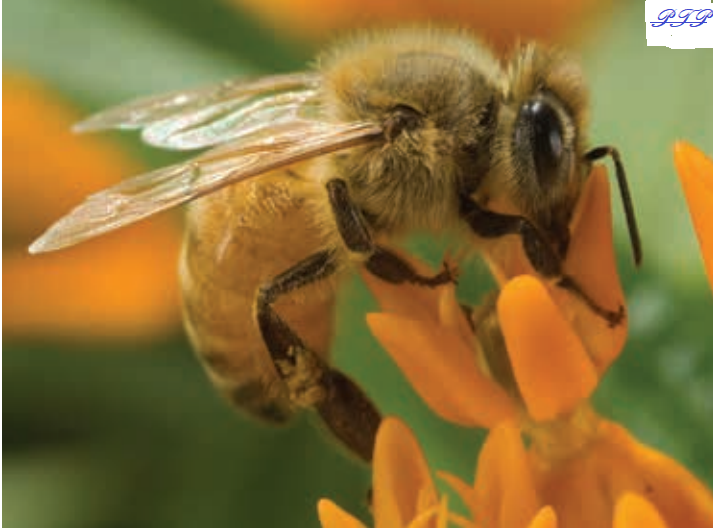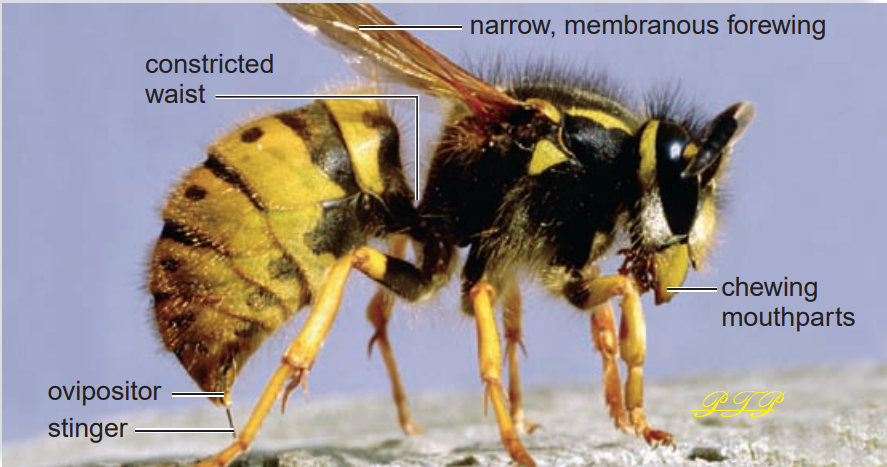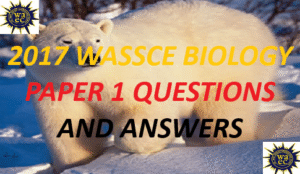Life process of honey bee, also known as Apis mellifera.

Life process of honey bee, also known as Apis mellifera.
Honey bee like all other insects has three main parts, thus the head, thorax, and abdomen.
Bees are social insects that live in a hive or comb.
The hive is made up of small hexagonal compartments called cells.
The cells are cemented together into a mass called the honeycomb.
Each cell is made up of wax but the cells serve as;
- A place for food storage.
- A brooding place for eggs, larvae, and pupae.
Three castes are found in the honey bee colony and these are;
- the queen (reproductive female),
- the drone (reproductive male), and
- the worker (non-reproductive female).
These castes are associated with different functions in the colony and possess special features which help them to perform these functions.
In a well-established colony;
- there is one queen,
- about one hundred drones, and
- several thousand workers.
They undergo complete metamorphosis in their life cycle.
Scientific classification of the honey bee;
-
Phylum Arthropoda
Reason:
- They are triploblastic coelomates.
- Their body is bilaterally symmetrical.
- They also undergo molting or ecdysis.
- Possesses open circulation (they are haemocilic).
- Presence of jointed appendages.
- Also, the presence of a metameric segmented body.
- Possesses an exoskeleton made of chitin.
Class Insecta.
Reason:
- They have a pair of compound eyes.
- Their body is divided into three (head, thorax, and abdomen)
- They also possess three pairs of thoracic legs.
- Presence of a pair of antennae on the head.
Order Hymenoptera.
Reason:
- They have a narrow waist which separates their thorax from their abdomen.
- Honey bees also possess membranous wings with a large forewing.
- Have well-developed wings with hairy bodies.
- Presence of a row of hooks that join the wings.
The Anatomy and Structure of a Honey Bee.

THE HEAD;
The head has five eyes.
- A pair of compound eyes and three small simple eyes called Ocelli.
- The compound eyes are composed of several thousands of simple light-sensitive cells called ommatidia.
- Ommatidia enables bees to distinguish light from
It has a pair of antennae
- This is a pair of sensitive receptors.
- They are used to feeling or touching and to smell.
Mouthparts consist among other organs of two mandibles and a proboscis.
- They are pair of jaws suspended from the head and parts of the bee’s mouth.
- The insects use them to chew wood, chew pollen, and make wax for comb-building.
- The proboscis is made of part of the maxillae and labium which produce a unique tube for drawing up liquids such as sweet juices, nectar, water, and honey.
- The insect releases it when needed, then withdraws and folds it beneath the head when it is not needed.
THE THORAX:
- The thorax supports two pairs of wings and three pairs of legs.
The legs;
- Its primary function is to help the bee to walk and run but various parts also serve special purposes other than locomotion.
- The forelegs have antennae cleaners (comb).
- The middle leg possesses a strong hair-like structure called the prong which is used for digging pollen grains from pollen baskets and for preening the wings.
- The hind legs possess pollen baskets (corbiculae) for carrying pollen grains from the flower to the hive.
- A brush is also on the hind legs for sweeping pollen grains from the body into the pollen basket.
The wing;
- The worker’s wing is used both for flight and ventilation.
- The drones and queens used their wings for flight only.
THE ABDOMEN;
- The adult honey bee has nine abdominal segments but the larvae have ten segments.
- The abdomen of the worker bee has five segments.
- The end of its abdomen has an ovipositor which is modified into a sting.
Mode of life among the castes;
The queen;
- The role of the queen is to receive sperm and produce eggs.
- She has an ovipositor for laying eggs.
- She also has a small wing that she uses for the nuptial flight.
- The queen defends her position in the colony using a sting at the tip of the ovipositor to sting to death other developing queens in the hive.
The drone;
- The drone is smaller than the queen but larger than the worker with a bulky body without a sting.
- They possess large powerful wings for nuptial flight.
- The role of the drone is to mate with the queen.
- After mating with the queen, the drone dies because his reproductive organs are ripped out of his body during the process.
The worker;
- The workers are the smallest in size but are the numerous members of the colony.
- They are sexually undeveloped.
- They guard and defend the colony against intruders.
- They ventilate and regulate the temperature of the hive through the movement of their wings.
- They collect nectar from flowers to the hive to prepare honey.
- The worker bee enhances cross-pollination in flowers.
- The legs are modified for the collection of pollen grains from flowers and carry them to the hive to mix with honey to form bee bread on which the members of the colony are fed.
The internal organs of honey bees;
The hypopharyngeal gland;
- It is located in the head of the bee (worker).
- It secretes royal jelly to feed the young larvae and the queen.
The wax gland;
- It is located in the lower part of the young worker’s abdomen.
- It releases wax for comb-binding.
The sting;
- It is designed to perforate the skin of her enemies and to pump poison into the wound.
- The worker bee dies after stinging because it cannot pull the barbs from the skin of its enemy.
- The sting of the queen bee is longer than that of the worker bee and she uses it to fight and kill rival queen in the hive.
Mode of feeding in the honey bee.
- Fluid feeding on pollen and nectar.
- The bee uses its proboscis to pierce and suck nectar from the base of the flower.
- The legs also carry pollen from the flower.
- The nectar and pollen are later processed into bee bread and honey.
Learn how honey bees aid in flower pollination.
- When a honey bee visits a flower, it lands on the petals.
- It will then insect its long proboscis into the nectary at the base of the flower to collect nectar.
- In the process, its body becomes dusted with pollen grains.
- In an attempt to collect more nectar,
- The bee may visit another flower of the same species with a mature stigma.
- The mature stigma may make contact with the body of the insect.
- This may cause some of the pollen grains collected from the flower to fall on the stigma.
- Leading to pollination.
Economic importance of bees
- Bees are agents of pollination.
- Beekeeping provides employment.
- A bee sting is painful and can lead to death.
- Bees cause a nuisance in the community.
- Bee wax is used in making candles, floor waxes, and polish.
- Honey produced by the bee is eaten, used to sweeten syrups and toffees and use to prepare drugs.
- Production of wax
Communication in Honey Bee;
- Communication about the location of food is accomplished through a dance language.
- A few bees, called the scout bees fly around searching for new sources of food
- When they get a new source of food,
- They fly back to the hive to communicate the location to others through dance.
- There are two types of dances namely the round dance and the tail-wagging dance.
The round dance is used when the food source is close to the hive.
- The bee dance round and round in a circle going clockwise and anticlockwise.
- The frequency with which the dancing bee changes direction indicates the quality of the source of food.
The tail-wagging dance is used when the source of food is far away from the hive.
- She dances in a figure-of-eight pattern followed by other bees nearby. She wags her abdomen as she moves up the middle of the figure.
- The tail-wagging dance gives information about the distance of the source of food from the hive as well as the direction in which to fly about the position of the sun.
NOTE: The nearer the food the faster the movements.
- When the wagging is done straight up the comb surface it indicates that the food source is in the direction of the sun.
- When it runs vertically down, it indicates a direction away from the sun or opposite the sun.
- If the axis of the dance is inclined at a certain angle to the right or left of the vertical then the food source would be at the angle right or left of the sun.
- Bees also communicate through touch, smell, licking stroking, and grooming which help them to keep their social bonds.
Join Enlighten Knowledge WhatsApp Channel.
Join Enlighten Knowledge Telegram platform.





